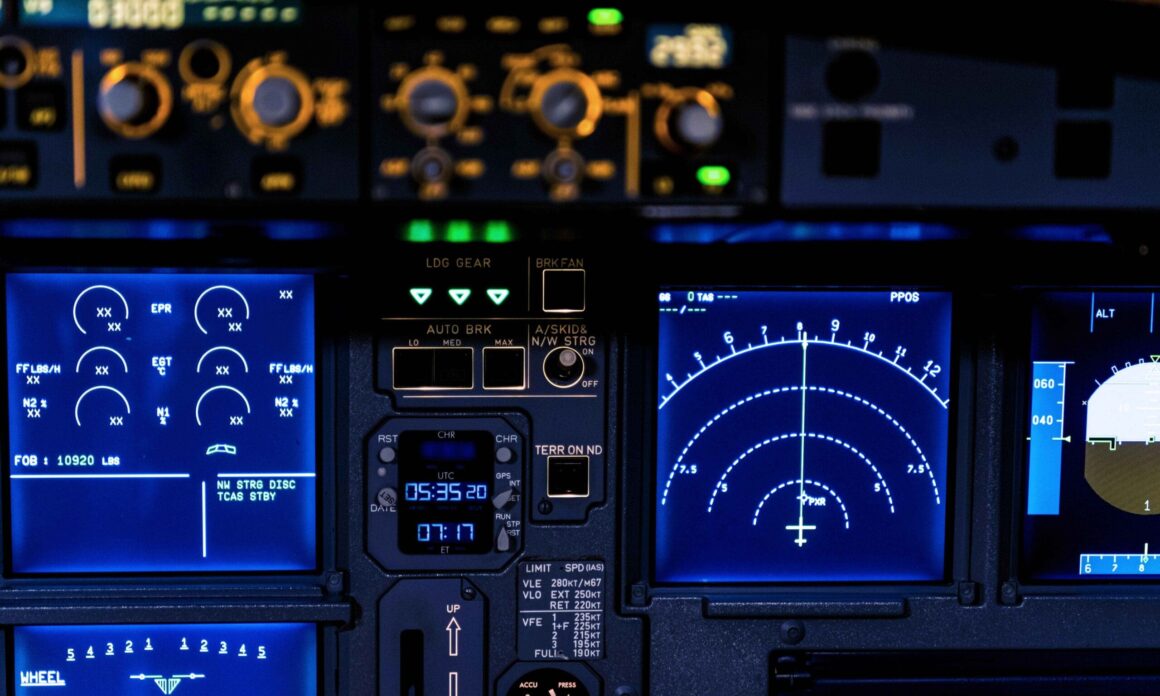Avionics Technician – Essential Systems – A Guide to Aircraft Electronics
Avionics, the network of electronic systems aboard an aircraft is vital for ensuring safe and efficient flights. From guiding planes through the skies to facilitating communication with air traffic control avionics systems are the heroes of every journey. In this article we will explore the commonly utilized avionics equipment & systems in different types of aircraft.
Crucial Avionics Systems for All Aircraft:
- Navigation Systems
- Inertial Reference System (IRS)- This self-contained system continuously calculates the aircrafts position, altitude and heading autonomously without relying on signals.
- Global Positioning System (GPS)- By receiving signals from a network of satellites GPS provides highly precise positioning data.
- Radio Navigation Systems- These systems, such as VOR and DME depend on ground-based infrastructure to supply bearing and distance information.
- Communication Systems
- High Frequency (VHF) Radios- Used for communicating with air traffic control and other aircraft.
- High Frequency (HF) Radios- Enable long range communication, beyond the line-of-sight limitations of VHF signals.
- Satellite Communication Systems- Provide communication coverage using satellites.
- Flight Instruments
- Primary Flight Displays (PFDs)- Present flight data, including airspeed, altitude, attitude and heading on a single screen.
- Multi-function Displays (MFDs)- Combine navigational and situational awareness information into one screen.
- Autopilots- Automate flight control tasks, reducing pilot workload and enhancing accuracy.
Additional Avionics Systems:
In addition to these systems there are various other avionics installations designed to meet specific aircraft types and operational requirements.
Some additional examples include:
- Weather Radar- It provides real time information about precipitation and turbulence to improve awareness.
- Traffic Collision Avoidance System (TCAS)-This system alerts pilots to potential collisions with other aircraft equipped with the same system.
- Ground Proximity Warning System (GPWS)- It offers warnings to pilots about terrain hazards during takeoff and landing.
- In Flight Entertainment Systems- These systems provide entertainment options for passengers on commercial aircraft.
The avionics configuration of an aircraft depends on factors such as its size, purpose, and requirements. However, the mentioned systems above are components of any modern aircrafts avionics suite that ensure safe and efficient flight operations.
Keeping Up to Date:
The field of avionics technology is continuously evolving, with new systems and capabilities emerging on a basis. It’s crucial for pilots and aircraft owners to stay updated on these advancements in order to operate their aircraft safely and efficiently. Regular training and familiarization with the avionics systems are essential, for maintaining safety and proficiency in the ever-changing world of aviation.
By understanding the avionics systems and their functions we can truly appreciate the remarkable technology that ensures our flights are both safe and smooth. The time you step onto an aircraft take a moment to reflect on the intricate network of avionics working behind the scenes guaranteeing a comfortable and exhilarating journey.


